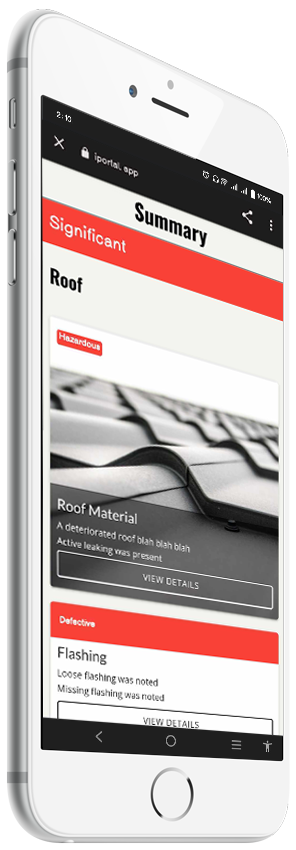OUR HOME INSPECTIONS
PROVIDING THE INSPECTIONS THAT YOU NEED
We provide thorough, detailed, and comprehensive home inspection services. Whether you are buying, selling, or maintaining a property, we are here to provide you with a thorough evaluation of your home’s condition. With our meticulous inspections, you can make informed decisions, address potential issues, and ensure the safety and value of your investment.
BUYER INSPECTIONS
Whether you are a first-time homebuyer, a seasoned homeowner, or a real estate professional, our home inspection services are designed to give you the confidence and knowledge you need to make informed decisions.
SELLER INSPECTIONS
Selling a home is a daunting task – and has a lot of unknowns. Take the guesswork out of selling your next home with a complete pre-listing home inspection. Sell your home faster, for more money, and with far less stress.
11th MONTH INSPECTIONS
Did you recently have a home built? Then before the 12-month builder warranty expires, have us perform an 11th-month builder warranty inspection. Allow us to make a professional punch list for your builder to fix.
COMPLETE INSPECTION REPORTS
We provide industry-leading home inspection reports that empower you to move into your new home or sell your existing home, with complete confidence. With pictures, descriptions, and video as needed, our home inspection reports are second to none.

From Top to Bottom
PROFESSIONAL INSPECTIONS
A home inspection is a comprehensive evaluation of a property’s condition, typically conducted by a certified home inspector. While the specific details may vary depending on the inspector and the region, a standard home inspection typically includes the following components:
- Exterior Evaluation: The inspector examines the exterior components of the home, including the roof, chimney, gutters, siding, windows, doors, and any visible foundation elements. They check for signs of damage, water intrusion, proper drainage, and general condition.
- Structural Assessment: The inspector evaluates the overall structural integrity of the property, including the foundation, walls, floors, ceilings, and support systems. They look for indications of structural problems, such as cracks, unevenness, or sagging.
- Roof Inspection: The roof is thoroughly inspected, including the roofing materials, flashing, vents, chimneys, and gutters. The inspector checks for leaks, damaged shingles, proper installation, and signs of wear and tear.
- Plumbing System: All accessible plumbing fixtures, pipes, and drains are examined for leaks, proper functioning, water pressure, and potential plumbing issues. This includes checking faucets, toilets, sinks, water heaters, and visible supply lines.
- Electrical System: The electrical components of the home, including the main panel, circuit breakers, wiring, outlets, and light fixtures, are inspected for safety, proper grounding, and compliance with electrical codes.
- HVAC (Heating, Ventilation, and Air Conditioning) Systems: The heating and cooling systems, including furnaces, air conditioners, heat pumps, and ductwork, are assessed for functionality, efficiency, and any potential issues.
- Interior Spaces: The interior areas of the home are examined, including walls, ceilings, floors, stairs, and doors. The inspector checks for signs of water damage, visible cracks, proper insulation, and general condition.
- Insulation and Ventilation: The insulation levels in the attic, walls, and crawlspaces are evaluated for energy efficiency and adequacy. The inspector also assesses the ventilation systems in these areas to ensure proper airflow and moisture control.
- Appliances and Fixtures: Built-in appliances, such as dishwashers, ovens, stoves, and exhaust fans, are typically tested for functionality. The inspector may also examine other fixtures like fireplaces, smoke detectors, and carbon monoxide detectors.
- Additional Components: Depending on the specific property and the inspector’s expertise, additional areas and systems may be included in the inspection. This could involve assessing the presence of pests, conducting radon or mold testing, or checking for the presence of lead-based paint.
After completing the inspection, the home inspector typically provides a detailed report that outlines their findings, including any observed defects, safety concerns, and recommended repairs or further evaluations. It’s essential to review this report carefully and consult with the inspector to address any concerns or questions you may have.
